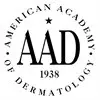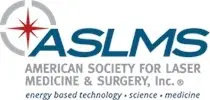Acne Scar Removal in Washington, DC
Acne Scar Removal Before and After Gallery *
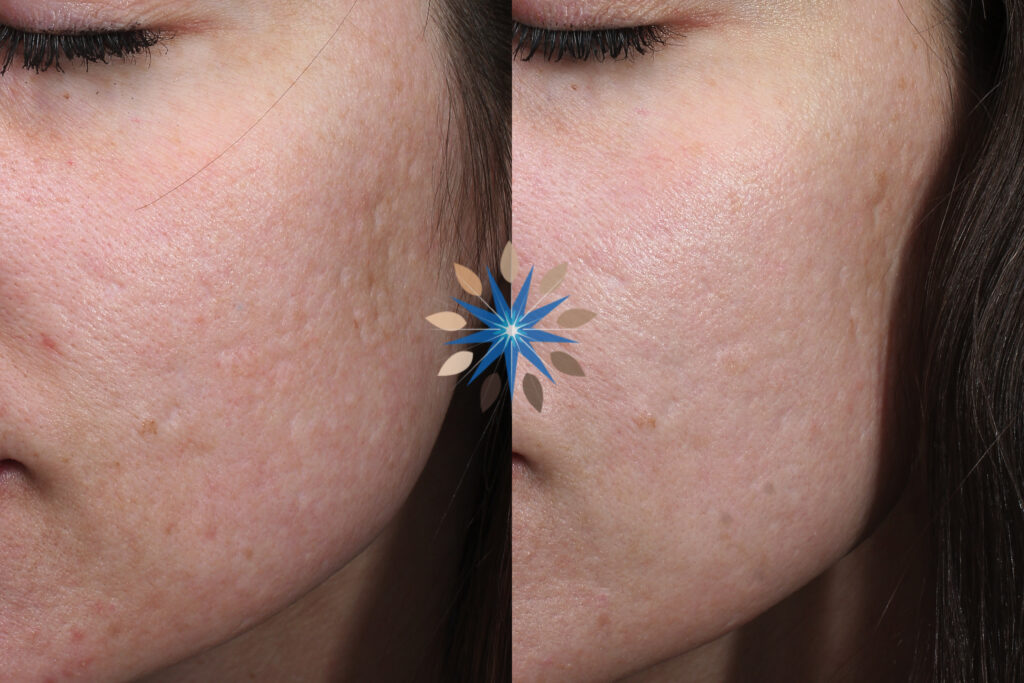
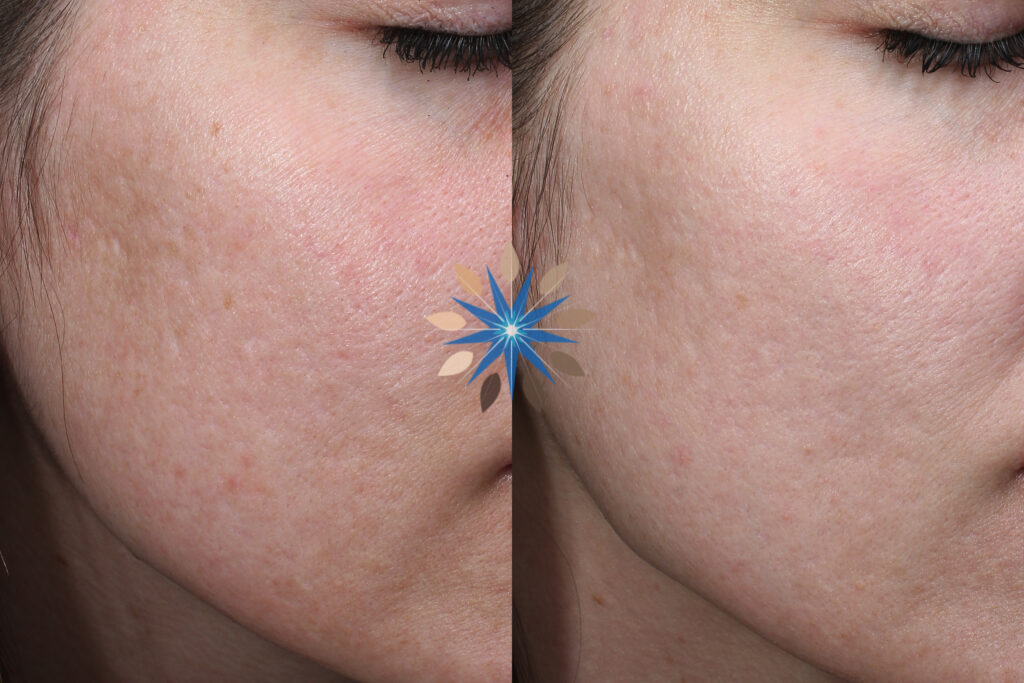
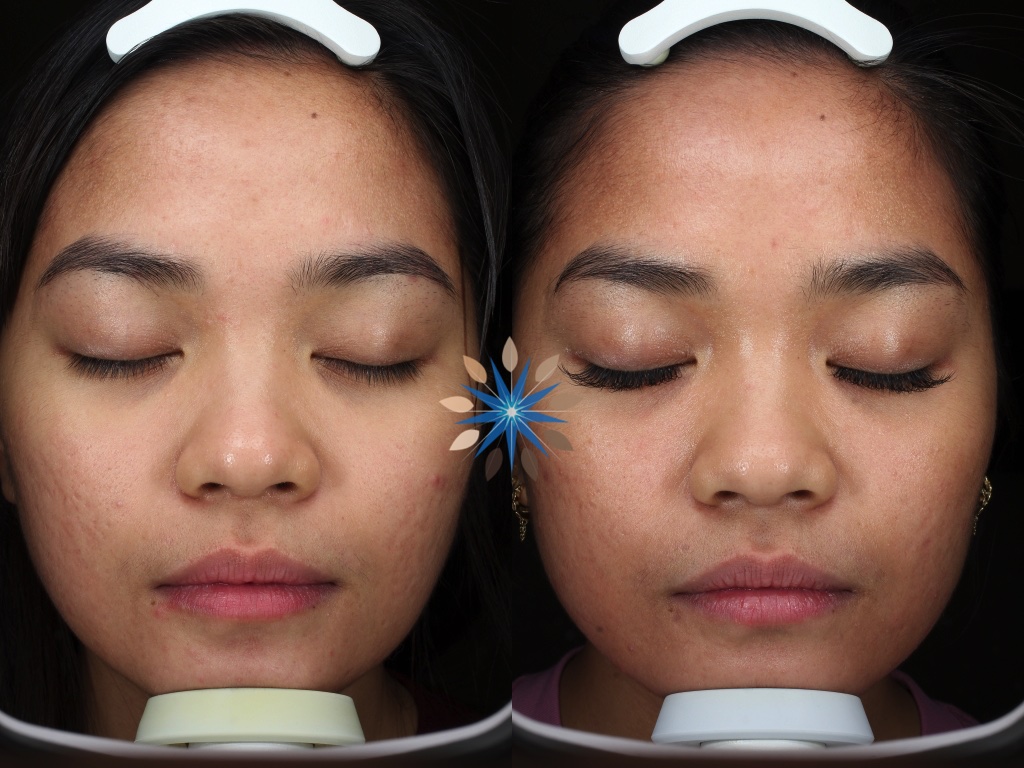

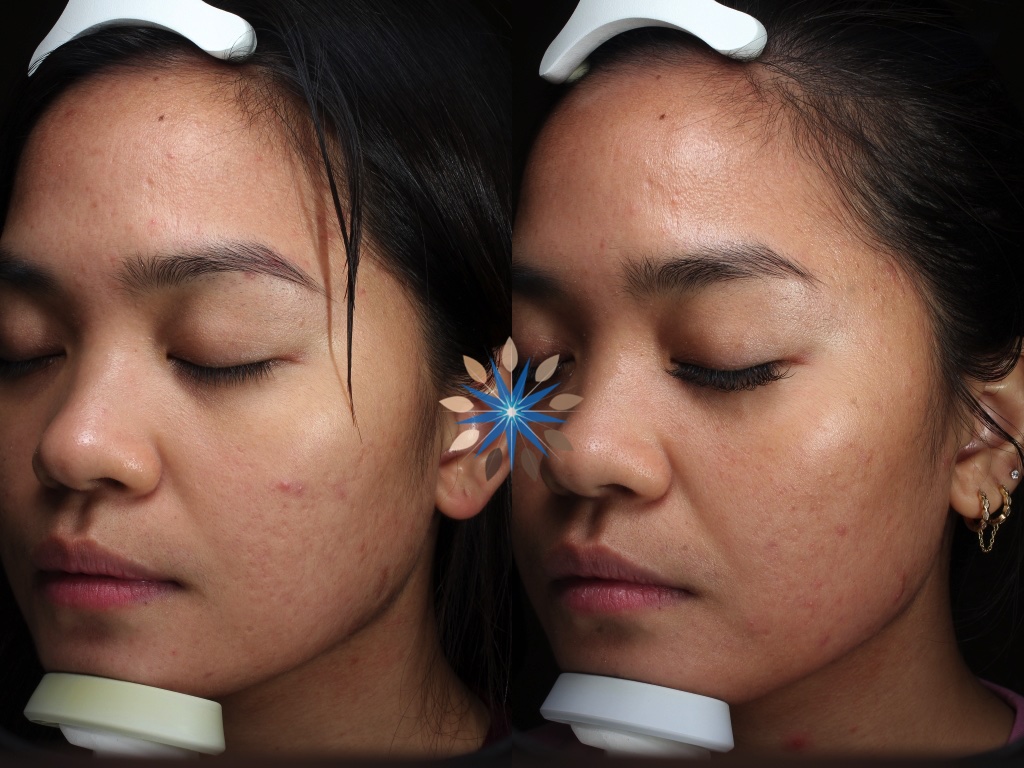

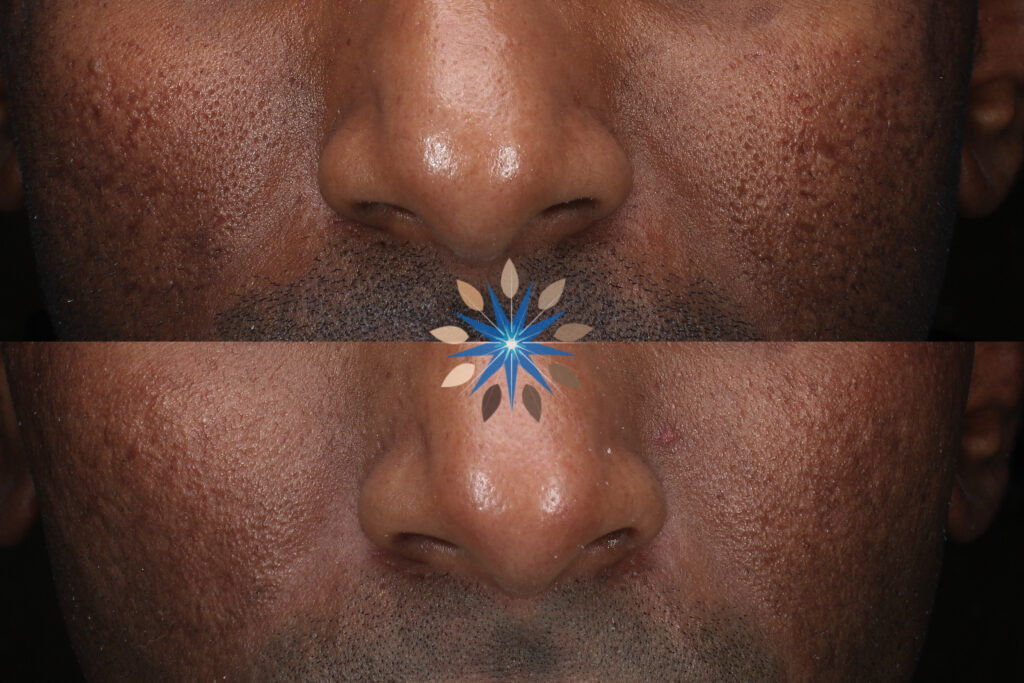
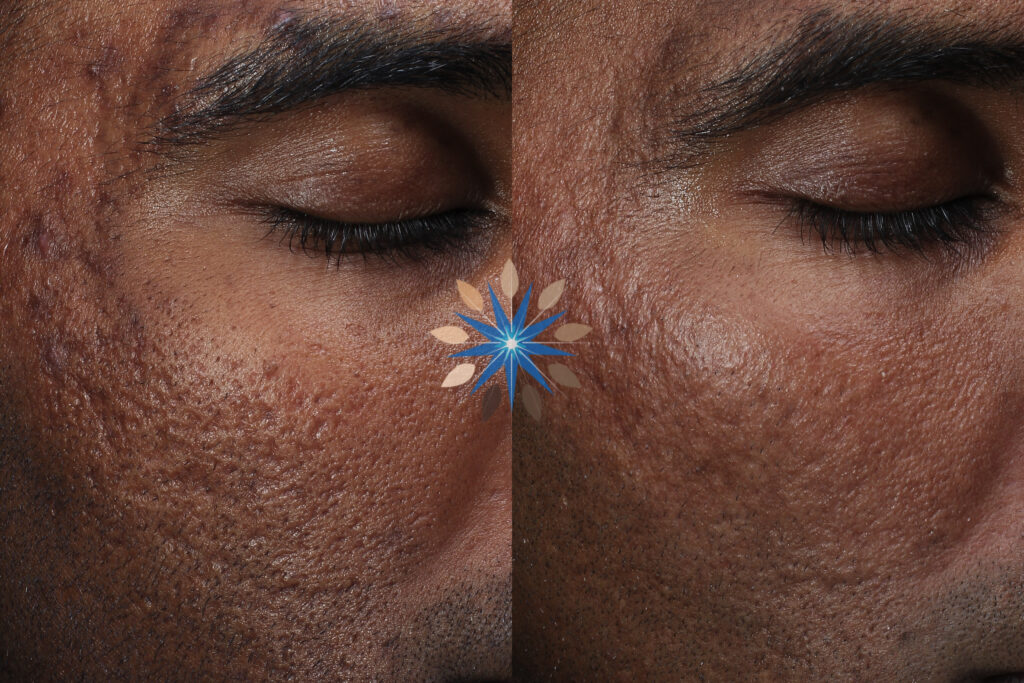




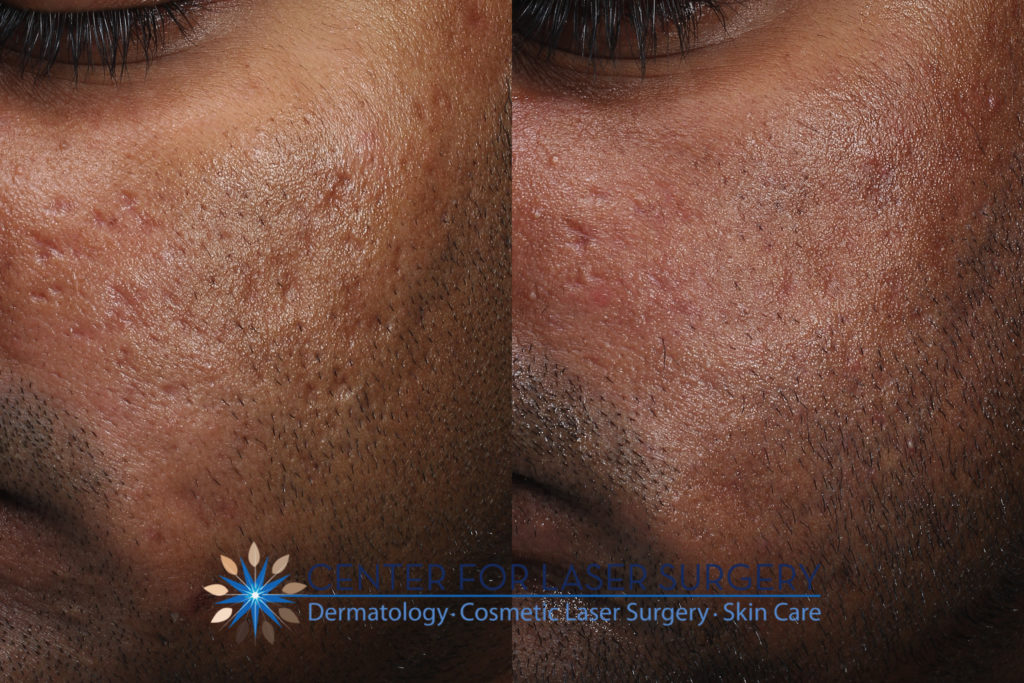
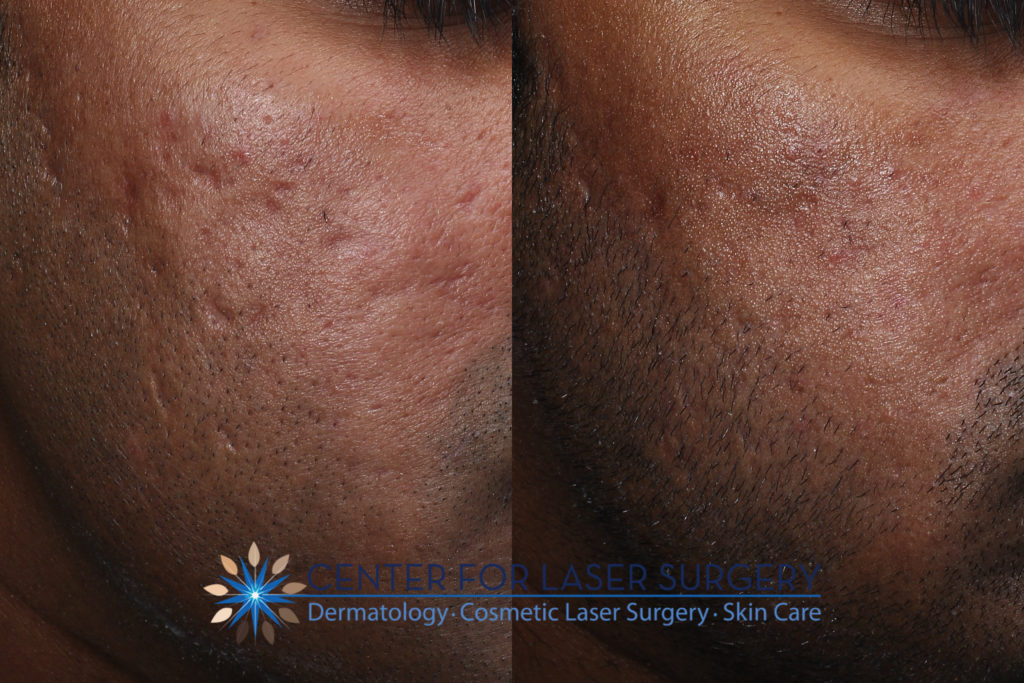
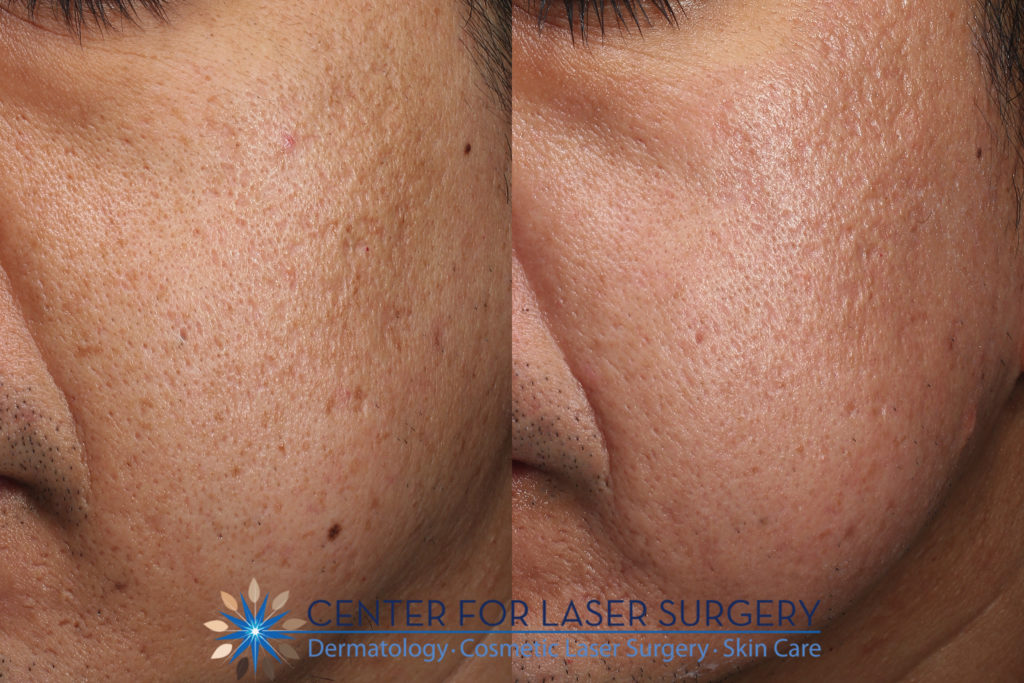
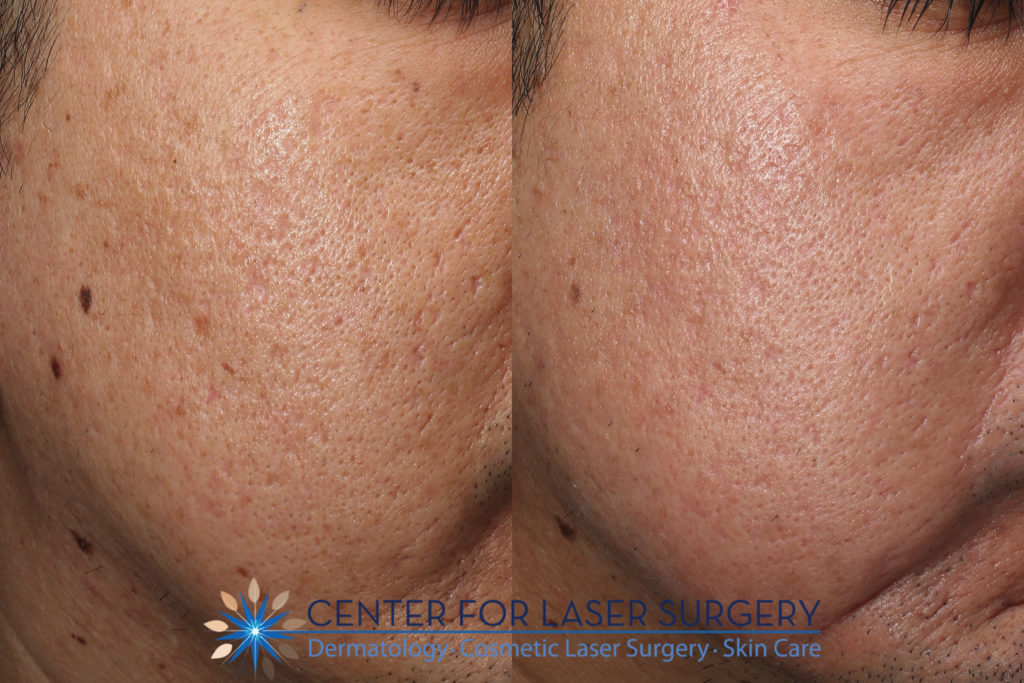
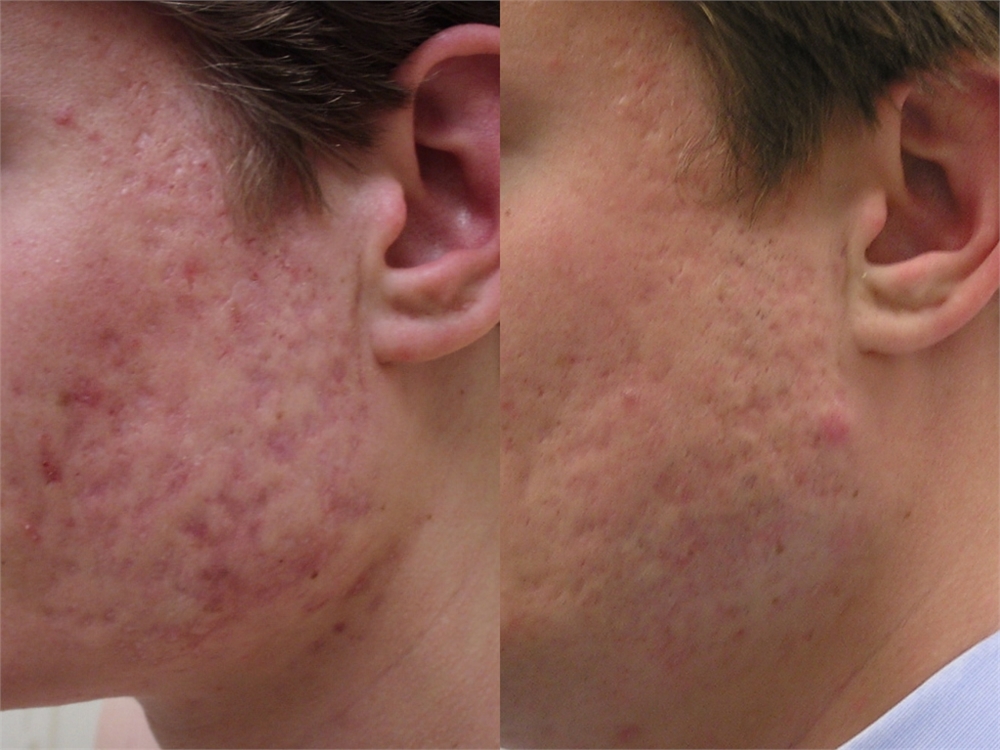
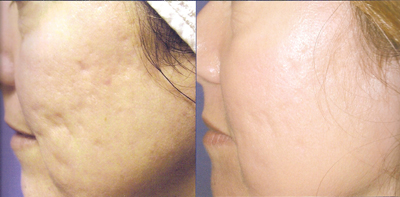
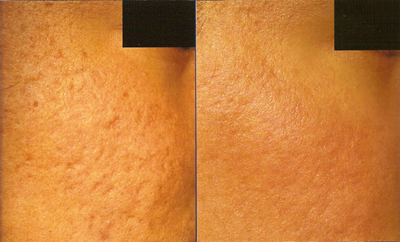
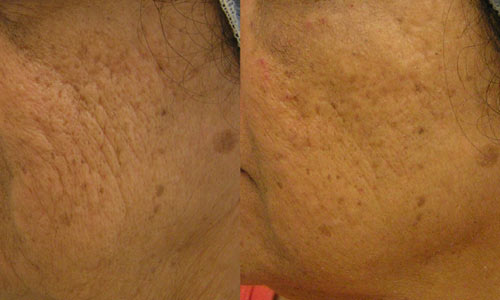
Dr. Adrian is a recognized expert in the treatment of all types of acne scars, and utilizes combinations of the latest surgical, chemical, laser, and radiofrequency based treatments available today with treatment plans tailored to each individual. Acne scars are a potential consequence of untreated cystic acne. Acne scars are textural changes on the skin surface which are visible to the naked eye and often create shadows in certain lighting. There are several distinct types of acne scars which are discussed below.
*To avoid confusion, ‘brown spots’ and ‘red spots’ related to acne are post-inflammatory hyperpigmentation and post-inflammatory erythema, respectively. These are a sign of active or recent acne and will resolve with appropriate acne treatment by a Board Certified Dermatologist.
Types of Acne Scars
Icepick Acne Scars
Icepick scars appear as thin and deep ‘pitted scars’. These are most common on the cheeks however often develop on the forehead and temples as well. Phenol CROSS, discussed below, is the most effective treatment for Icepick Scarring.
Boxcar Acne Scars
Boxcar scars are broader well demarcated scars with steep, sharply defined edges. Phenol CROSS and Saline Subcision, discussed below, are effective treatments for improving boxcar scarring.
Rolling Acne Scars
Rolling Scars are similarly broad depressions such as boxcar scars but have more gentle sloping edges. Rolling scars are due to scar tissue adhesions under the skin which pull down on the skin surface. These tend to be more noticeable when smiling or pinching the skin, unlike icepick or boxcar scars which are more superficial. Saline subcision and other subcision modalities discussed below are effective treatments for rolling acne scars.
Atrophic Acne Scars
Atrophic scars are most commonly found on the back or chest but can also occur on the face. Atrophic scars are due to a loss of collagen in the area of the scar, leading to depression of the skin. Unlike other types of acne scarring, long-term color changes (lightening or reddening) of the area within the scar may be noted with atrophic scars, especially on the chest and back.
Hypertrophic Acne Scars
Hypertrophic scars are due to excessive scar tissue which develops during the healing process. Commonly referred to as keloids, hypertrophic scars present as firm, raised, and sometimes contracted or tightened areas of skin. Hypertrophic scars in certain areas may be painful. Like atrophic scars these are most common on the chest and back but can occasionally occur on the face. These are typically treated with steroid injections and laser treatment to reduce thickness and associated erythema (redness).
Treatments for Acne Scarring
PHENOL CROSS and TCA CROSS
CROSS (Chemical Reconstitution of Skin Scars) is a technique which uses the principles of chemical peeling applied to to the treatment acne scars. This treatment, which the most effective treatment for ice-pick scarring, utilizes Phenol (>84% Carbolic Acid), or in some cases TCA (70-100% concentration), both of which are very powerful chemical peeling agents, applied directly to the base of ice-pick scars. This causes an intense and highly focused chemical peel at the base of the scar, stimulating the formation of new collagen, elastin, and extracellular matrix leading to a reduction of scar depth over time. The CROSS Technique is is a clinically proven, well-tolerated, and effective treatment for icepick scarring with minimal to no downtime. CROSS treatments are performed monthly and depending on depth of scars 4-8 sessions are performed as a targeted therapy prior to treatment with lasers and other energy based devices to further blend in previous scarring with the surrounding normal skin.
Acne Scar Subcision
Subcision with needles, cannulas, or saline (see below) is utilized in the treatment of rolling, boxcar, and other atrophic scars. Over the years methods of subcision have evolved. Early subcision utilized specialized ‘nokor’ needles with blades at the tip, which were inserted under the skin and used to loosen tissue under deeper rolling scars. This method of subcision was quite traumatic, leading to significant bruising and frequent hypertrophic scarring. Cannula subcision, in contrast to nokor subcision, utilized blunt tipped cannulas instead of bladed needles to achieve a similar effect of tissue dissection with less bruising and risks of hypertrophic scarring. Cannula subcision treatments are often coupled with injection of collagen stimulating fillers such as sculptra, leading to smoothing of atrophic scars.
Dr. Adrian has developed another simple yet highly effective technique for subcision that does not rely on mechanical tissue dissection. His method of subcision, which he refers to as Saline Subcision, relies on hydrostatic pressure of saline rather than mechanical action of blades or cannulas. Using various volumes of saline injected directly into rolling, boxcar scarring, or atrophic scars, saline subcision utilizes the principles of collagen dissection and subsequent collagen remodeling to decrease the depth of these scars. Essentially painless and with little to no associated downtime, this has become one of the most popular treatments for atrophic scars such as boxcar and rolling scars in his acne scar removal practice.
Fraxel Non-Ablative Laser for Acne Scars
When used by highly trained and experienced providers, the Fraxel Laser remains one of the most effective tools for the treatment of acne scars with minimal downtime. The Fraxel laser uses the principle of fractionated energy deliver to produce controlled subcutaneous wounds, which stimulate collagen remodeling and new collagen formation in areas treated. This low downtime option for the treatment of acne scars remains the gold standard non-ablative treatment for acne scarring, and is safe for use in all skin types when proper pre and post care preparations or used. Treatments are performed monthly during an acne scar treatment course, and improvement develops for several months after each treatment. Side effects include swelling and redness to the treated area for 2-3 days.
Radiofrequency Microneedling (Intracel) for Acne Scars
Radiofrequency Microneedling utilizes an energy based microneedling device to directly deliver RF energy underneath the skin surface to stimulate the formation of new collagen and improve the texture of all types of acne scars. Utilizing a similar concept to Fraxel Non-Ablative skin resurfacing, RF microneedling has the advantage of bypassing the outer layer of skin and delivering high energy directly to the collagen layer of the dermis. This protects the epidermis from heat induced inflammation which is beneficial when used on skin types which are prone to hyperpigmentation from laser based treatments. Typically 4 treatments spaced 1 month apart are recommended for each treatment course. Side effects from treatment include redness and swelling of the treated area which resolves in 2-3 days. Please note that RF Microneedling is not the same as ‘pen’ or ‘roller’ based microneedling which has shown to provide temporary improvement but no long-term improvement to textural acne scars.
Fractional CO2 Ablative Resurfacing for Acne Scars
Fractional CO2 resurfacing for acne scars utilizes a ablative CO2 laser which effects a controlled second degree burn to the skin in a fractional manner. Fractional CO2 resurfacing is a highly effective treatment for acne scar removal in patients with lighter skin tones who can tolerate a week of at-home downtime post treatment. This treatment can provide both smoothing of subtle acne scars along with significant improvement in overlying skin tone and superficial texture.
How Do I Remove My Acne Scars?
Acne scar treatment is a long process typically requiring a variety of treatment modalities for the best overall results. During an acne scar removal consultation, Dr. Adrian examines a patient’s individual scars and develops a comprehensive treatment plan to achieve maximal improvement with the least downtime and inconvenience possible. Please note, there is a $125 consultation fee for acne scar consultation with Dr. Adrian which is applicable towards future treatment if desired. To arrange an acne scar consultation with Dr. Adrian please call 202-966-8814 or click here to request a consultation.



